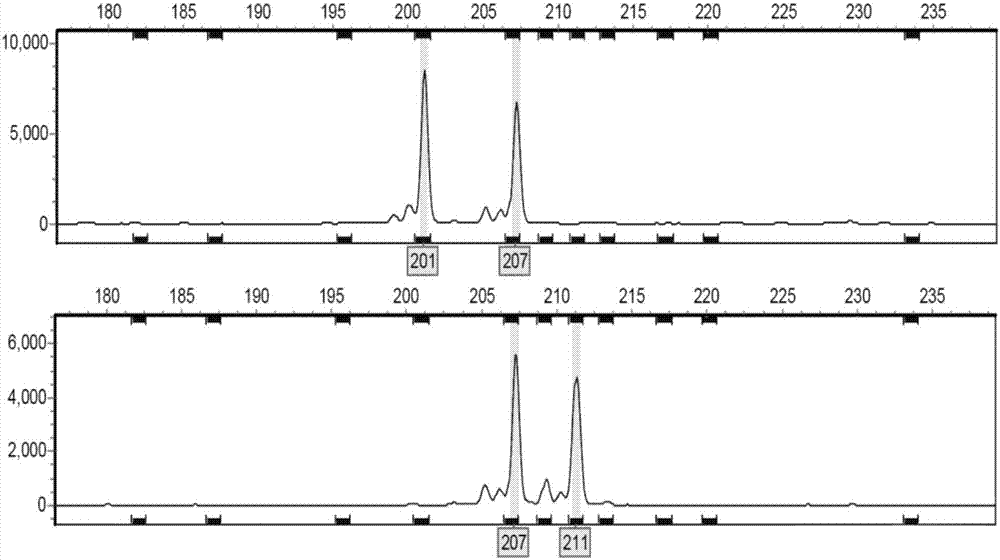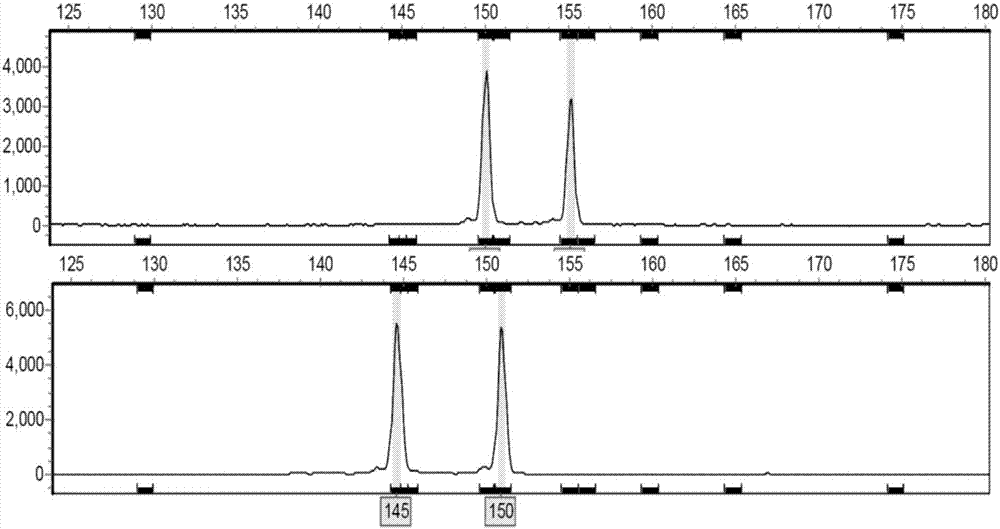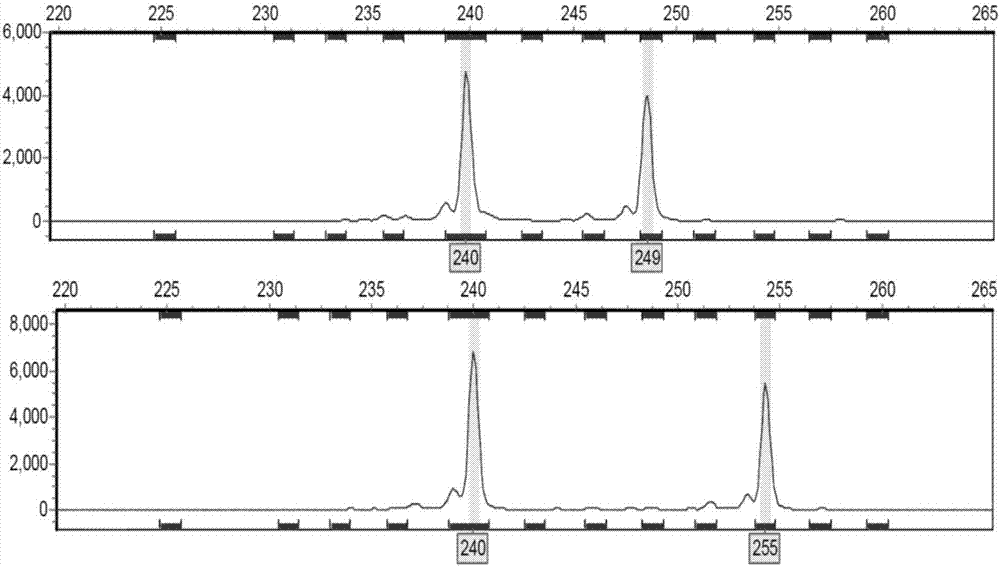Method of identifying varieties of robinia pseudoacacia based on fluorescent SSR finger-prints of capillary electrophoresis
A capillary electrophoresis and fingerprint technology is applied in the field of identifying Robinia pseudoacacia species based on capillary electrophoresis fluorescence SSR fingerprints, and achieves the effects of convenient operation, less environmental impact, and rapid identification.
- Summary
- Abstract
- Description
- Claims
- Application Information
AI Technical Summary
Problems solved by technology
Method used
Image
Examples
Embodiment 1
[0030] 1. Experimental materials:
[0031] In this experiment, 12 clones of Robinia pseudoacacia were used as test materials. R.pseudoacacia LuCi 1, R.pseudoacacia LuCi 2, R.pseudoacacia LuCi 7, R.pseudoacacia LuCi 8, R.pseudoacacia LuCi 9 ( R.pseudoacacia LuCi 9), Luci 10(R.pseudoacaciaLuCi 10), Luci 11(R.pseudoacacia LuCi 11), Luci 13(R.pseudoacacia LuCi 13), Luci 14(R.pseudoacacia LuCi 14), Luci 28 (R. pseudoacacia LuCi 28), Luci 32 (R. pseudoacacia LuCi 32), Luci 36 (R. pseudoacacia LuCi 36).
[0032] The materials were collected from Daqingshan Forest Farm, Fei County, Shandong Province.
[0033] In May 2016, the young leaves were collected, dried on silica gel, and set aside.
[0034] 2. Genomic DNA extraction:
[0035] Take the young leaves of Robinia pseudoacacia clones, and use the plant tissue genomic DNA extraction kit (magnetic bead method) (Cat. No. PTED-6030) of Inrich Biochemical Technology (Shanghai) Co., Ltd. to extract according to the instructions.
[0...
PUM
 Login to View More
Login to View More Abstract
Description
Claims
Application Information
 Login to View More
Login to View More - R&D
- Intellectual Property
- Life Sciences
- Materials
- Tech Scout
- Unparalleled Data Quality
- Higher Quality Content
- 60% Fewer Hallucinations
Browse by: Latest US Patents, China's latest patents, Technical Efficacy Thesaurus, Application Domain, Technology Topic, Popular Technical Reports.
© 2025 PatSnap. All rights reserved.Legal|Privacy policy|Modern Slavery Act Transparency Statement|Sitemap|About US| Contact US: help@patsnap.com



